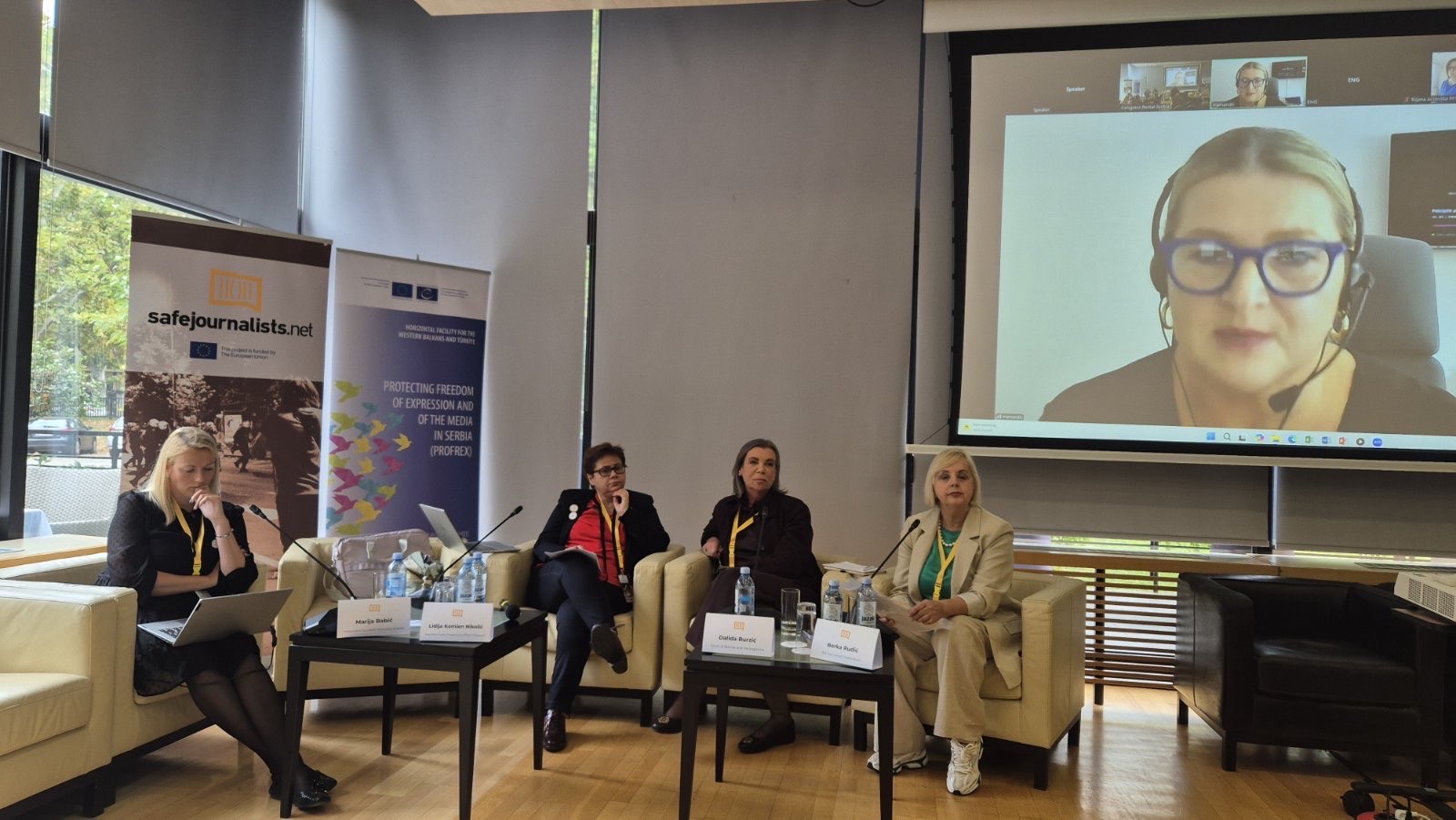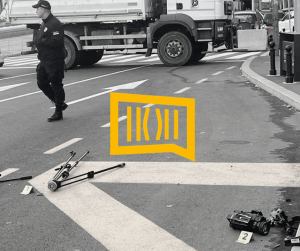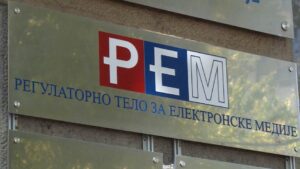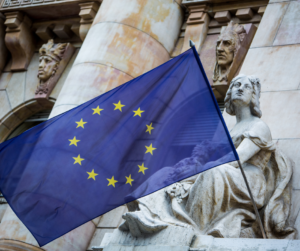On the third day of the SafeJournalists regional conference in Belgrade, three panels addressed key threats to media freedom: impunity for attacks on journalists, SLAPP lawsuits against journalists that stifle public debate, and digital security, including surveillance and forensic tools that endanger sources and privacy. The day’s focus was on concrete solutions — from clear protocols and more effective prosecutorial action, through European frameworks to curb SLAPPs, to practical protective measures in the digital environment.
An Invisible Barrier to Justice: The Safety of Journalists and Impunity in the Western Balkans
The panel “The Invisible Barrier to Justice: Journalists’ Safety and Impunity in the Western Balkans” was moderated by Borka Rudić from the BH Journalists’ Association. Speakers: Marija Babić, lawyer and researcher at NUNS; Lidija Komlen Nikolić, prosecutor at the Appellate Public Prosecutor’s Office in Belgrade; Biljana Arsovska from the Basic Public Prosecutor’s Office of North Macedonia; Marina Mandić, representative of Croatia’s Ministry of the Interior; and Judge of the Court of BiH, Dalida Burzić.
Marija Babić stated that NUNS is recording the highest number of attacks and threats in recent years: “We documented 79 physical attacks on journalists, 98 threats, five attacks on media outlets, and eight threats against media outlets.” She particularly emphasized police conduct during student protests — confiscation of equipment, destruction of material, and “60 attacks on journalists by the police,” alongside frequent failures to react to third-party attacks.
An analysis of 70 dismissed complaints for endangering journalists’ safety shows that “42 were dismissed by an official note, and 28 by decision.” The problem with the official note, she said, is that it is regulated by a bylaw and applied when “it clearly follows from the complaint that no criminal offense has been committed,” meaning the injured party has no right to appeal and receives no notification. “Practice should be the other way around,” Babić concluded. According to NUNS data, only one conviction was handed down last year and one this year — an indicator of high impunity.
Prosecutor Lidija Komlen Nikolić assessed that deep social and media polarization influences selective institutional reactions. “We live in a polarized society and a polarized media space… the media play a decisive role,” she said. From 2016 to 2025, 651 cases were recorded, 128 of which were closed with an official note.
She stressed that a public prosecutor has the right to assess and categorize complaints, but also the obligation to undertake all evidentiary actions, while respecting the procedural guarantees of victims. Although amendments to the Criminal Procedure Code formally strengthen these rights, in practice there is still a “lack of sensitivity and information.” She advocates greater institutional autonomy for the police and depoliticization of the Interior Ministry’s operational work, as well as more proactive communication: “The street goes both ways — injured parties should take an interest in the progress of their complaints, and the authorities must improve communication.”
According to Marina Mandić (Croatian Ministry of the Interior), relations between the police and the media have improved significantly following intensive cooperation with the Croatian Journalists’ Association (HND) and the Croatian Journalists’ Union since 2022, and the signing of a Cooperation Agreement at the end of 2023, accompanied by two protocols — on conduct at public gatherings and when a criminal offense has been committed against a journalist. “We wanted a foundational document… so that both sides do their jobs professionally and with respect for ethical norms,” she said. The documents set out detailed steps and establish faster communication channels: “Today relations are good and clearly defined… we get in touch the very moment something happens.” The Ministry has visited major newsrooms to inform journalists of their rights and encourage the reporting of attacks.
Biljana Arsovska reminded that North Macedonia is rated best in the region for journalists’ safety, but “caution is essential.” Amendments to the Criminal Code from 2023 grant journalists the status of public officials while performing their duties, so attacks are treated more severely. “We already have two final convictions in which obstruction of a journalist was qualified as obstruction of a public official in the performance of duty,” she said. Good practices include the court–media council (modeled on the U.S.) and the pilot “contact prosecutor for journalists’ safety,” launched in Skopje and later expanded to Štip, Bitola and Tetovo — which has sped up proceedings and provided better oversight of cases.
Judge Dalida Burzić emphasized that “the judiciary always deals with consequences,” and that protecting journalists requires an effective chain from the police through the prosecution to the courts. “The media and the judiciary should be natural allies,” she said, with respect for international standards. In BiH, 33 contact points (15 within police structures and 18 within prosecutors’ offices) were established in 2023–2024 to exchange information and track cases. However, the lack of a unified database hampers oversight: “These cases are invisible, and that should be fixed.” She added that prosecutors have a duty to act even when an attack is not formally reported: “The fact that something hasn’t been reported cannot relieve a prosecutor of responsibility.”
SLAPP Lawsuits as a Tool for Intimidating Journalists and Silencing Media Freedom
This panel was moderated by Dragan Sekulovski — Director of the Association of Journalists of Macedonia — with contributions from Flutura Kusari, adviser at the Council of Europe; Nebojša Đuričić, Judge of the Higher Court in Belgrade; Bojana Jovanović, journalist at KRIK; and Katia Mierzejewska from ARTICLE 19.
Participants warned that strategic lawsuits against public participation (SLAPPs) undermine investigative journalism and stifle public debate across Europe. Moderator Dragan Sekulovski called SLAPPs “the new cancer of journalism,” noting that they exhaust reporters “emotionally, financially and professionally” and target public-interest reporting rather than seeking justice. The consequences, he stressed, hit families, colleagues and the wider community.
Council of Europe adviser Flutura Kusari presented European protection mechanisms: an EU Directive and a Council of Europe Recommendation to safeguard public participation, with an EU implementation deadline in May 2026. Since only about 10% of SLAPP cases are cross-border, national transposition and court practice will be decisive. The Council of Europe, she added, offers training, legal opinions and guidance for legislators.
From the judicial perspective, Higher Court Judge in Belgrade Nebojša Đuričić said CoE indicators help judges recognize SLAPP patterns — even when lawsuits appear partially well-founded. Early dismissal and cost measures can limit abuse and protect journalists. Courts, he said, should consider the size of claims, the identity of the parties, and whether the target is a journalist or an activist. The recommendations allow intervention at different stages of proceedings, including in cases with partially valid claims.
Speaking from the newsroom angle, KRIK journalist Bojana Jovanović pointed to stark inequalities in courtrooms, where defendants often face powerful plaintiffs. Procedural constraints — such as bans on naming parties — can obstruct free reporting. Beyond legal risk, SLAPPs undermine core journalistic principles and the public’s right to know, while emotional and professional burdens spill over to colleagues, families and communities.
In the realm of advocacy, ARTICLE 19’s Katia Mierzejewska said legal mapping and shared case databases reveal patterns of abuse. Awareness campaigns like the European SLAPP Contest publicly call out vexatious suits. Yet criminal defamation remains a key problem — decriminalization is necessary. Citing Poland, she noted activists sued for peaceful protests, showing that SLAPPs extend beyond newsrooms. Professional peer pressure and legal-sector training can help prevent abuse, while the Media Freedom Rapid Response provides legal aid.
Participants agreed that SLAPPs pose a serious threat to media freedom and public participation. The response requires aligned legal frameworks, vigilant courts, sustained advocacy and citizen engagement. Citizens, lawmakers and journalists were urged to use European tools and campaigns to counter abusive litigation.
Digital Surveillance of Journalists — An Invisible Threat to Media Freedom
The final panel featured Pieter Omtzigt, former MP and long-time member of PACE; journalist Slaviša Milanov (FAR); Jelena Sesar of Amnesty International; and Filip Milošević from the SHARE Foundation. The moderator was NUNS lawyer Rade Đurić.
Slaviša Milanov described how spyware was secretly installed on his phone during police questioning. He said going public was necessary for protection: “In the long run they didn’t manage to intimidate us, but the problem arose with our sources, who distanced themselves. We can no longer get first-hand information.”
Pieter Omtzigt warned of the spread of sophisticated surveillance technologies in Europe and worldwide, often without public knowledge and without adequate oversight. Speaking about Pegasus and similar tools, he emphasized the profound consequences for privacy and political stability: “When they know everything about you… tomorrow you can be sacrificed in the name of ‘security’.”
He pointed to a lack of transparency — even MPs sometimes do not know what is being used. As an example, he mentioned the Netherlands, where the use of Palantir since 2011 was officially confirmed only in 2023 thanks to freedom-of-information requests.
Jelena Sesar stressed that Serbia is not an outlier in the misuse of digital surveillance, but that the scope and methods are alarming. Based on findings produced with the SHARE Foundation, three patterns were identified: the use of Cellebrite forensic technology for forced unlocking and data extraction; domestic spyware “Novi Spy”; and the highly invasive Pegasus against “high-value targets.” “That means they had access to absolutely everything on the phone,” Sesar said, adding that Pegasus was detected in at least six cases and that digital forensics is often used without prosecutorial oversight and without notifying those affected.
Filip Milošević reminded that basic telecommunications services in Serbia can be monitored without special procedures, with hundreds of thousands of metadata accesses annually. With the spread of end-to-end encryption, surveillance has shifted “from the network to the device” — through spyware and forensic tools. The bottom line: the technology to cross-reference data exists, but the key problem remains weak oversight and non-transparent access to citizens’ personal data.
Regional findings point to similar patterns: a high frequency of attacks, weak and inconsistent institutional reactions, and the rise of digital surveillance. Croatia’s example shows that clearly defined protocols and constant communication between institutions and newsrooms can improve practice. North Macedonia records normative progress and useful institutional models, while BiH is building a network of contact points — but all require transparency, unified records and depoliticization of operational procedures. A “partnership” between the media and the judiciary, together with robust protection from digital surveillance, remains a precondition for genuine journalist safety and the public interest.
Two Workshops Held for Journalists
Two workshops for journalists were held during the regional conference. On Day Two, a workshop titled “Defending the Truth — Basics of Digital Security for Journalists” covered key topics such as using encrypted email services, secure messaging apps, and the importance of strong, unique passwords combined with two-factor authentication.
The second workshop, “Digital Security: TTX and Canary Tokens,” was held on the third day of the conference. It provided a safe environment for participants to learn to recognize digital threats, understand the consequences of neglecting security measures, and gain practical skills for prevention and response.
Both workshops were led by Monika Kutri, a trainer in journalist safety and project manager at the Croatian Journalists’ Association.




